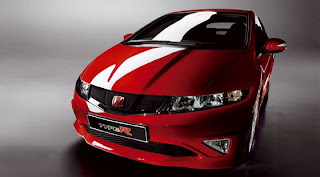Reviewers call the
2011 Toyota RAV4 one of the most practical and family-friendly SUVs you can buy. The 2011 Toyota RAV4, reviewers say, continues that tradition.
The optional third-row seat also helps the RAV4 stand out. While the RAV4 launched the segment, the competition is starting to catch up. If you like the RAV4, reviewers say you’ll likely be happy with it. The RAV4 is most often compared to the Honda CR-V. Hovever, compared to a four-cylinder RAV4, the CR-V is tough competition.
It beats the RAV4’s base highway fuel economy and has a more up-to-date interior, with more standard features.
The
2011 Toyota RAV4 crossover SUV is available with a fuel-efficient 2.5 liter, four-cylinder engine that racks up a healthy 22 city/28 highway MPG and a slightly less gas stingy V-6 that still logs in an impressive 27 highway MPG.

Pricing should be around $22,750 MSRP for the base model Rav4--All RAV4s buyers can choose between either a front-wheel drive or four-wheel drive. The smaller engine has a four-speed automatic standard, while the larger engine has a five-speed automatic as standard and that is available on the smaller engine as an option.
The Base Model RAV4 has a suggested MSRP of $21,925 for the FWD version. The Toyota RAV4 has the most interior room-seating and storage-of any vehicle in its class.
Designed to blend comfort with performance, the 2011 RAV4 features four-wheel independent suspension, a rigid body structure, and enhanced power steering. The positives of the RAV4 are many.
That said, the RAV4 is one of the older designs in the compact crossover segment. The 2011 Toyota RAV4 is a midsize crossover SUV. There are three trim levels available: base, Sport and Limited. The base RAV4 comes standard with 16-inch steel wheels, a limited-slip differential (front-drive models only), air-conditioning, cruise control, full power accessories, keyless entry, a tilt-and-telescoping steering wheel, height-adjustable driver seat and a six-speaker stereo with CD player and auxiliary audio jack. The base V6 4WD adds 17-inch cast-aluminum wheels.
The RAV4 Sport comes standard with 18-inch cast-aluminum wheels, color-keyed bumpers and sportier suspension tuning. The Sport Appearance package that is available on all four-cylinder and V6 4WD Sport models deletes the spare tire mounted on the rear cargo door (the model features run-flat tires instead) and adds a leather-wrapped steering wheel, heated mirrors and chrome exterior details.
All V6 models add hill-start assist and hill-descent control, which are also standard for the RAV4 four-cylinder with the optional third-row seat.An Upgrade Value package for the base RAV4 includes a sunroof, roof rails, privacy glass, 17-inch cast-aluminum wheels, six-disc CD changer, steering-wheel-mounted audio controls, upgraded cloth upholstery and a cargo cover. The Premium package available on the Sport and Limited trim levels (though not with the third-row seat) adds leather upholstery and an eight-way power driver seat with power lumbar support. V6-powered models can be equipped with a tow package.
The 2011 Toyota RAV4 comes standard with a 2.5-liter inline-4 engine that delivers 179 hp and 172 pound-feet of torque. Fuel economy for this model with front-wheel drive is 22 mpg city/28 mpg highway and 24 mpg combined, and 21/27/24 with 4WD.The V6 achieves an impressive 19 mpg city/27 mpg highway and 22 mpg combined for the front-wheel-drive RAV4, and these ratings change only by 1 mpg less for EPA highway when the 4WD model is selected.
Every
RAV4 trim level can be matched with either front-wheel or four-wheel drive.
Antilock disc brakes, stability control, traction control, whiplash-reducing front headrests, front-seat side airbags and full-length side curtain airbags are standard on every 2011 Toyota RAV4. The RAV4 also performs well in Insurance Institute for Highway Safety tests, earning the top rating of "Good" in both the frontal-offset and side-impact crash tests. The RAV4's interior boasts a clean design with large, simple controls and lots of storage space. Overall interior quality is acceptable, but the Chevy Equinox and Honda CR-V make the RAV's interior look too insubstantial and budget-oriented.
Nevertheless, the "Toyota RAV4" is a model of practicality. The rear seats recline and can slide fore and aft to optimize passenger space or cargo capacity. To configure the RAV4 for cargo, all you need to do is flip a lever on the second-row seats.

























